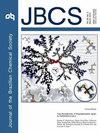Dereplication of Sclerotiorin-Like Azaphilones Produced by Penicillium meliponae Using LC-MS/MS Analysis and Molecular Networking
IF 1.3
4区 化学
Q3 CHEMISTRY, MULTIDISCIPLINARY
引用次数: 0
Abstract
Penicillium meliponae, a recently described and rare species, was isolated as an endophytic fungus from the Amazonian plant Duguetia sthelechantha, and has been proven to be a pigment producer. Considering the high productivity of this species and the lack of data on its chemical composition, the present study aimed to characterize the chemical profile of P. meliponae and evaluate the influence of agitation and the use of different culture media. For this purpose, liquid chromatography coupled with mass spectrometry (LC-MS/MS) and molecular networking were used, allowing the identification of 17 azaphilone molecules with sclerotiorin-like skeletons, becoming the first chemical report of this species. In addition, the different production patterns in the tested culture media were indicative that this species is sensitive to changes in the composition of the carbon source and to the presence of agitation. Furthermore, this work contributes to the fragmentation mechanisms of the different possible structural arrangements for azaphilones of the sclerotiorin type and serves as a repository of information on the gas-phase behavior of this type of metabolite in mass spectrometry experiments and will assist future studies aimed at the discovery of azaphilones.LC-MS/MS分析及分子网络技术对梅利蓬青霉类核蛋白氮杂啉类化合物的脱皮作用
青霉菌(Penicillium meliponae)是最近发现的一种罕见的内生真菌,它是从亚马逊地区的植物Duguetia stheelechantha中分离出来的,并已被证明是一种色素生产真菌。考虑到该物种的高产和缺乏化学成分的数据,本研究旨在表征P. meliponae的化学特征,并评估搅拌和不同培养基使用的影响。为此,利用液相色谱-质谱联用(LC-MS/MS)和分子网络技术,鉴定了17个具有类似于菌核蛋白骨架的氮唑啉分子,成为该物种的首次化学报道。此外,培养基中不同的生产模式表明,该物种对碳源组成的变化和搅拌的存在很敏感。此外,这项工作有助于研究固结蛋白类型的氮化氮酮的不同可能结构排列的断裂机制,并在质谱实验中为这类代谢物的气相行为提供信息库,并将有助于未来旨在发现氮化氮酮的研究。
本文章由计算机程序翻译,如有差异,请以英文原文为准。
求助全文
约1分钟内获得全文
求助全文
来源期刊
CiteScore
2.90
自引率
7.10%
发文量
99
审稿时长
3.4 months
期刊介绍:
The Journal of the Brazilian Chemical Society embraces all aspects of chemistry except education, philosophy and history of chemistry. It is a medium for reporting selected original and significant contributions to new chemical knowledge.

 求助内容:
求助内容: 应助结果提醒方式:
应助结果提醒方式:


